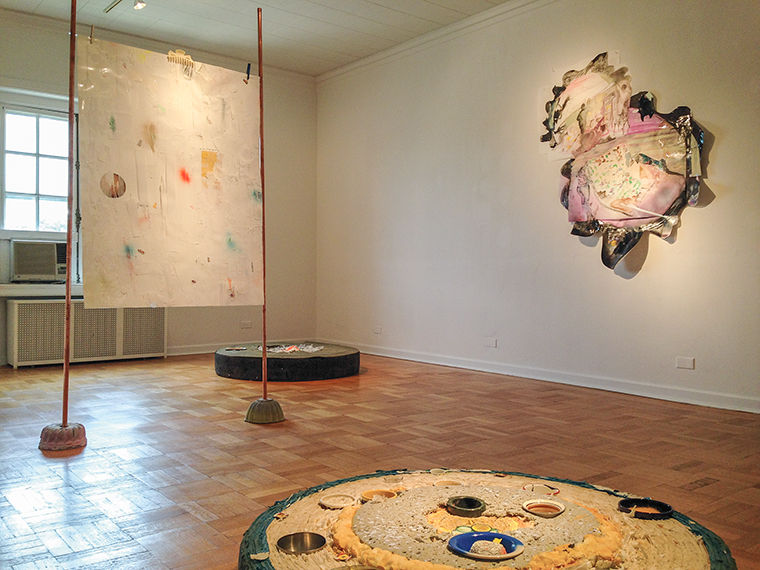‘Synaesthetica’ dissolves boundaries, expands understanding
September 14, 2015
“Synaesthetica” is an art installation by Chicago artist Stevie Hanley, which will be on display until Nov. 15 at The International Museum of Surgical Science, 1524 N. Lake Shore Drive. The exhibit includes video displays, constructed objects and sound in an interactive space.
The title “Synaesthetica” derives from “synesthesia,” a neurological phenomenon in which one form of sensory input elicits a reaction from another form of sense perception. For instance, a “synesthete” might hear a color or taste a sound, said Rami Gabriel, associate professor in the Humanities, History & Social Sciences Department.
According to Hanley, who studied undergraduate psychology at the University of California, Berkley, “Synaesthetica” aims to dissolve the rigid compartmentalization of sensory perception as it is commonly understood. He suggested that synesthesia is not merely a rare psychiatric condition, but a creative openness to the world around us that everyone has the capacity to experience.
The International Museum of Surgical Science is not predominantly a space for art, but curator Collin Pressler said it brings a fresh perspective to the space.
“[We have] the belief that contemporary artists bring new interpretive lenses to spaces,” Pressler said. “I believe in a trans-disciplinary approach or expanded field of inquiry. I like saying strategies native to one discipline can be utilized effectively in another.”
Pressler added that, although surgery is a practice that promotes health and the extension of human life, its methods are violent and invasive—rupturing of human flesh and biological sovereignty.
Hanley made similar observations about the nature of his art. He said he takes great pleasure in the chaotic mess of his studio, which he compares to a “witch’s kitchen.”
“I’m interested in this infinite unknown. It’s a kind of black window. It’s difficult, but I want to step through it,” Hanley said.
He added that he initially began studying psychology to understand himself in a more rational context, but—ironically—art has allowed him to find catharsis by embracing chaos instead.
“I’m trying to create a kind of productive confusion,” he said.
Furthermore, Pressler described how important art exhibits are to excavating surgical history.
“Artists working with these themes can help provide less didactic insight into the meaning of surgical science for people who are visiting the museum,” he said.
Gabriel also discussed using art as a supplementary tool in a science classroom.
“It helps students to see the analytical work that’s inside a work of art,” he said. “There is a possibility to express something with music or visual arts which is deeper than analytical discussion.”
“Synaesthetica” and the contemporary arts initiative at The International Museum of Surgical Sciences share a common goal: They aim to dissolve boundaries and broaden the public’s understanding of perception, science and our relationship to the world around us.
“I think about neurological phenomena like synesthesia-—which is essentially crossed wires—and I often ask myself if synesthesia is to neurology what metaphor is to language,” Pressler said.
Hanley added that the senses are not isolated. “They’re interacting with each other,” Hanley said. “I like to think if you walk through all of the historical exhibits at the museum and then come to ‘Synaesthetica’ last, it’s like zooming out—seeing everything from a broader perspective.”
“Synaesthetica” will be on display on the 4th floor of The International Museum of Surgical Science until Nov. 15. It also includes sound work from Caleb Yono and Dolly Parton. To learn more about the exhibit, visit imss.org. For more information about Stevie Hanley, visit steviehanley.com.








